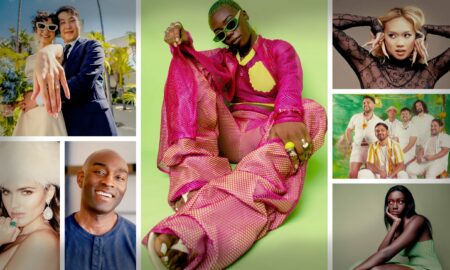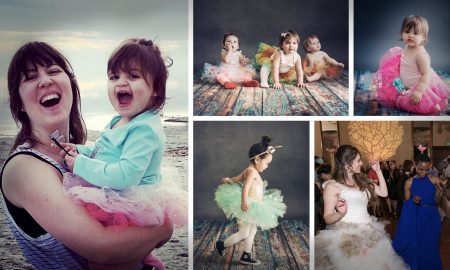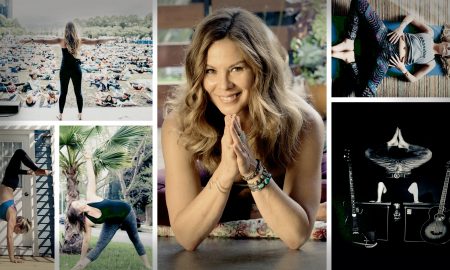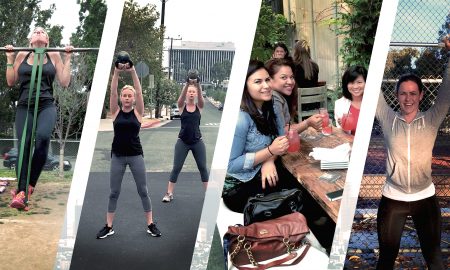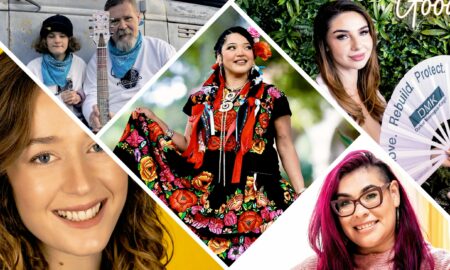

Today we’d like to introduce you to Daniel González.
Daniel, please share your story with us. How did you get to where you are today?
My mother nurtured my creativity when I was very young. I thought the knowledge and tools to make things was incredibly empowering. My grandparents in Zacatecas were people who out of necessity were makers and farmers. When I was a young child, I was able to see the houses with the rough-hewn doors, the stone cattle fences and chicken coops my grandparents built “with their bare hands”. All these activities were done for sustenance and survival to get some kind of economic advantage.
When I began to make things, it was from my mom who was trying to get my mind and hands away out of the streets. I grew up in an apartment above liquor store in Boyle Heights in the 1980s. My earliest memory was watching the drama unfold below when someone overdosed inside their car. I also remembered the murals that were in our neighborhood, Aztec princes, scenes of the past full brown faces that you would never hear or read about in school and of course our Lady of Guadalupe. In school, I was the nerdy, chubby, asthmatic brown kid that didn’t speak English very well, wasn’t good at sports and got picked on a lot. In order to navigate that world, I turned my creativity into a way of interacting with kids my age, I would copy comic book superheroes and make them into posters. I became the “arty kid” which got me some praise and enough respect to be left alone. High school wasn’t much different. I kept to myself and did the best I could through those awkward years.
When I turned 18, I couldn’t wait to getaway. My parents became convinced of my talent when I won first place in the Congressional District Student Art Competition for Congresswoman Lucille Roybal-Allard’s district. I took my mother to Washington DC where my painting was displayed. I then enrolled and was accepted to the California College of Arts and Crafts now know as California College of the Arts. I earned a full scholarship that, however, didn’t cover housing and after a year and a semester, I found myself houseless and in debt. I ended up working in the art store across the street from the college. Despite that setback, I got started in printmaking there. It was mostly out of necessity. I didn’t have the money to buy many art materials and printmaking only required paper, ink, some carving tools and material to carve on. I stayed in the Bay Area for three more years volunteering at the San Francisco Center for the Book and at the Mission Cultural Center. My first printmaking teacher was Juan Fuentes. He was very patient with me and I made my first linocut edition there and my first silkscreen prints. I also became acquainted with the Bay Area’s vibrant printmaking community, which really fostered my growth into the craft. After September 11th, the art store chain I was working for started to disintegrate and my job was no longer secure so I decided to move back to Los Angeles.
Coming back home to Los Angeles, I began to connect with other creative people through legendary Chicano artist Gilbert “Magu” Lujan’s monthly Mental Menudo meetings. Eventually, I would buy my very own printing press. That’s when I knew I was making a commitment to the craft. The machine weighs half a ton and it demands maintenance and space. Since then, I’ve really delved deep into relief printmaking and letterpress. Among my fellow pressmen, I’m the youngest and have been recognized for my skill and technical ability. I’ve dismantled machines that are over 100 years old and put them back together so they can work properly. The activity around the press keeps my mind active. It’s always some kind of problem-solving either in creating the carved block or getting the machine to print correctly or to achieve. I’m very lucky to have to have found a niche where I can really thrive and feel fulfilled.
Overall, has it been relatively smooth? If not, what were some of the struggles along the way?
It was never a straight line. I really began getting into art at 12 years old, when I started attending free community art classes. Convincing my parents that art can be a career was another challenge. I’m the first generation born in the United States to immigrant parents and I think the expectation is for their children to become professionals or at least learn a trade. Art is perceived by many as a hobby, not something serious like a lawyer, doctor or engineer. This prompted my decision to study design. In doing that, I really learned to love typography and while I was at California College of Arts & Crafts, I ran towards the print media classes while others where taking web and digital design classes to make those quick internet bucks.
That’s where I found printmaking and letterpress and later, I would take it on as my primary media out of necessity. I love the immediacy of it and the sharp contrast. The activity of creating the block is soothing. I think within the canon of relief printmakers, we find great Mexican printmakers that have put on paper their times and experience as well as printmakers from the United States. For me, I am putting my experience down on paper. That experience is that of a Chicano who has deep roots in two very different places, my parent’s hometown of Teúl in Zacatecas and Boyle Heights and that’s the biggest challenge of all, how to tell this story in printmaking.
Please tell us about Printgonzalez.
I started my company, Printgonzalez as a way of promoting and selling my print work. I also do a lot of design work for a variety of different projects. My specialties are relief printmaking, letterpress & graphic design. I’m always working on a variety of different projects. One of my works was selected to be show at Smithsonian Museum of American Art for the Printing the Revolution exhibit to open in September. I’ve also been commissioned to make public art, illustrations, book design as well as logo and branding. This year I’ve worked on three books; East of East: The Making of Greater El Monte for which I created the cover art for; A Fine Line: How Most American Kids Are Kept Out of the Best Public Schools by Tim DeRoche for which I’ve designed cover to cover and is our second book together after his debut novel, The Ballad of Huck & Miguel; as well as a poetry collection, A Grave is Given Supper by Mike Soto. Tim and I will be working on a third book together, a children’s book, which he hopes to publish later this year. Currently, I’m working for the Aguilar Family, Pepe, Leonardo and Angela in refreshing their brand. I’m very excited for this work because Pepe’s father, Antonio Aguilar is a fellow Zacatecano and I grew up listening to his music through my parents. What sets me apart from others is that the work I create still has a life beyond the screen or even beyond the page. It’s not pixels and vectors. It started as a line on a piece of paper or a cut on linoleum. It’s informed by the sincerity of my lived experience merged with a very tactile media. I think that comes through in everything I do.
If you had to go back in time and start over, would you have done anything differently?
I’ve learned so much from everything I’ve been through, good and bad, that I don’t think there’s much that I would do differently. I would probably be a little more confident or shut out certain voices. Maybe not listen too much to naysayers and carry on. I have very few regrets.
Contact Info:
- Website: printgonzalez.com
- Phone: 3232172144
- Email: [email protected]
- Instagram: @printgonzalez
- Facebook: /printgonzalez
- Twitter: printgonzalez








Image Credit:
The photograph is by Rafael Cardenas.
Suggest a story: VoyageLA is built on recommendations from the community; it’s how we uncover hidden gems, so if you or someone you know deserves recognition please let us know here.

